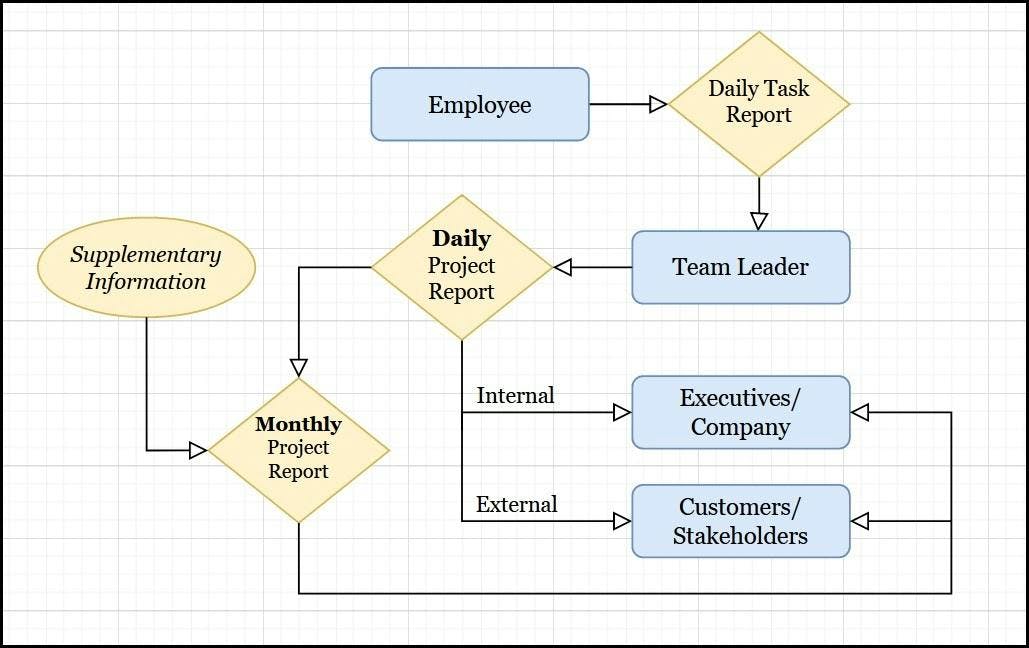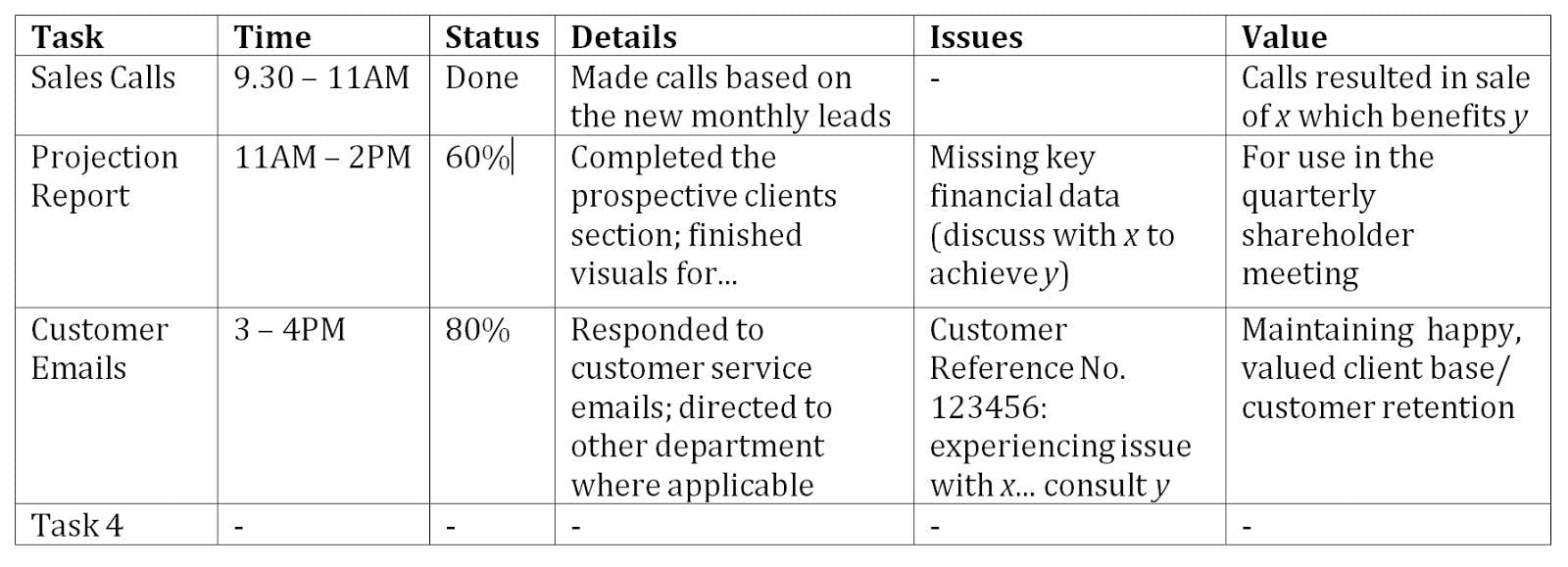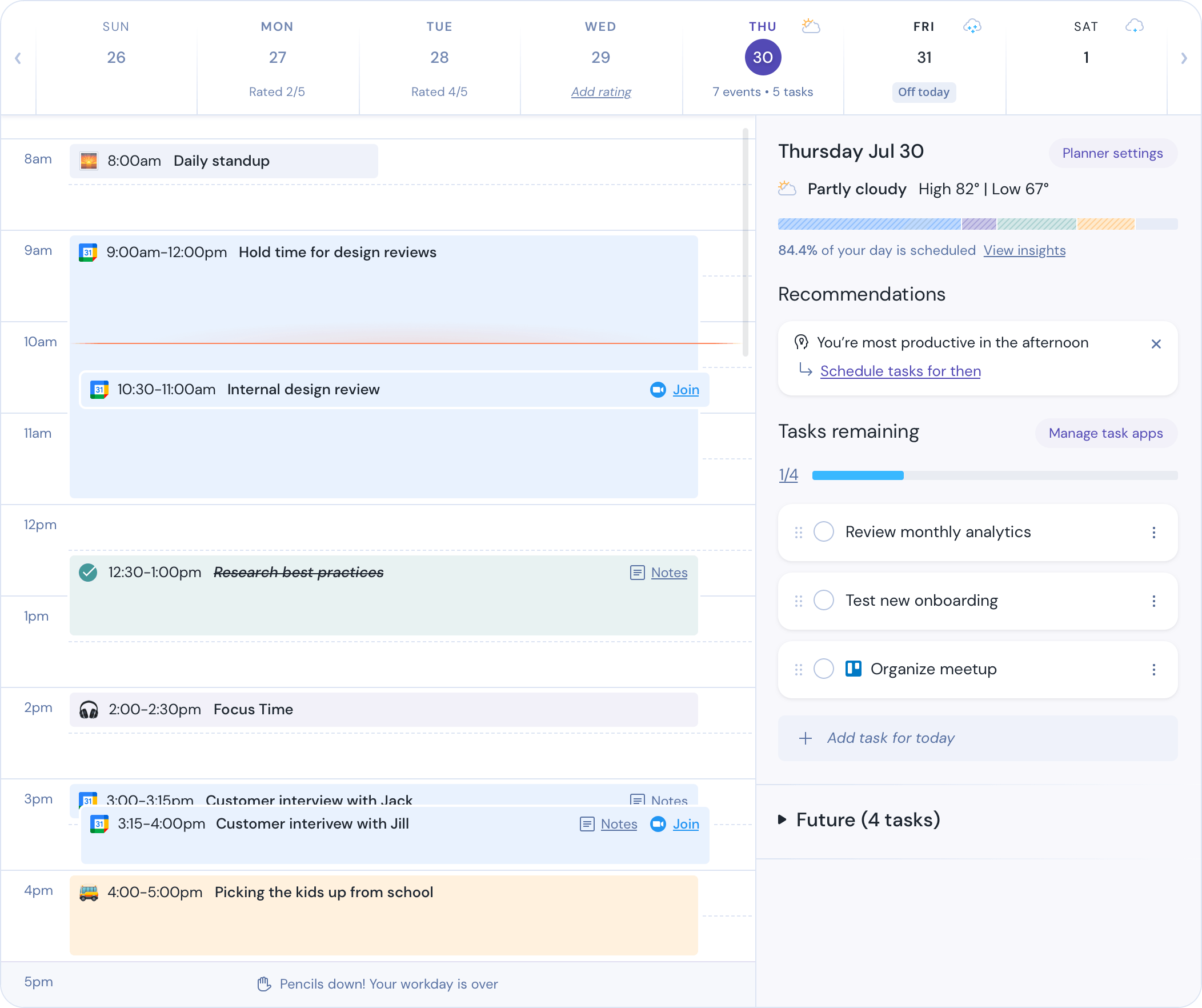Write Daily Task Reports To Improve Your Collaboration

Not all productivity is created equal, and it’s notoriously tricky to establish a general benchmark for a “productive day”.
Faced with this problem, one quickly realizes how useful a daily task report can be, particularly for providing greater transparency between teams, managers and other colleagues.
Before we get stuck in, let’s quickly look at project reports to extrapolate some ideas relevant to daily task reports, and see their relationship with one another.
What is a Project Report and Daily Task Report?
Just as a handyman may send an invoice to customers detailing work done, a project report is a document that aims to summarize individual or group performance over a period of time, in relation to the deliverables.
It acts as a record for how far along a project currently is. As its purpose is to share information as clearly as possible, such a report is formal and typically standardized.
Get Started! Share results with your team with a daily report in Friday.
Issuing a project report at the end of each day to quickly summarize progress sounds like utter madness, right? Well, it is and it isn’t. One day is not nearly enough time to prepare a complete analysis, but daily task reports submitted by employees accumulate as solid evidence of work done for both daily project reports and the large-scale project reports for stakeholder meetings and whatnot.
Some teams might choose to deliver their reports verbally, as either discussion or presentation, by phone call or in person. Other ways include by email or in Friday. Either way, the purpose is for everyone to learn what has been accomplished since the last report, gaining a more comprehensive overview of project status.
What Is In A Daily Task Report?
While a project report – whether daily or quarterly – is communication from project manager to execs or customers, a daily task report is from team members to manager. It’s an employee-up internal communication, documentation of worker performance, activities, accomplishments, and achievements in a given work day.
In some instances, employees are responsible for creating their own reports, while in other cases an appointed team member will collect information and compile it as a single report ready for the team leader. One model could be:

Much like the project report, it’s typically standardized, designed as a progress indicator and could be based on information shared verbally, in a quick face-to-face chat or daily standup.
The subsequent written document can be created from templates, which most commonly consist of fields that ask about the work employees have done and how it relates or contributes to the overall project or long-term aims.
While employees don’t usually think of their time as a product, in the same way that a book or coffee is, a daily report is a statement that attempts to translate work hours into something more quantifiable for their task assignments. In plain terms, it’s the question: “You’ve been here eight hours, so what have you got to show for it?” This is usually given in terms of the exact task details, the resources that you employed, the amount of time taken, and any other pertinent information.
How a Daily Task Report Works in Friday
Streamline your daily reports and eliminate extra meetings with Friday. It’s the perfect communication system for regular daily stand-ups or daily reports, without a lot of pings and dings. You can give everyone on a team a quick overview of what is happening. Schedule prompts on a regular basis for the team to answer and then have it roll up into one report.

- Pick questions and prompts for a daily report. Use a Friday template or build your own.
- Add a daily cadence or choose a schedule that makes sense for your team.
- Your team will automatically be pinged in Friday, by email, or by Slack
- Your team members complete the report. They can even drag tasks over from popular task management apps & tools if needed
- See automatic reports--all responses will automatically be rolled up to the team lead
Share your daily task report in Friday.
Advantages of Daily Task Reports
It’s rather useful to become adept at drafting up these daily records, not merely because they’re quite popular amongst keen-eyed leaders, but also because they can provide you with valuable insight into your effectiveness and efficiency at work – our sacred productivity, praise be unto thee!
There are three principle benefits to keeping up with daily reports:
1. Transparency
Although daily task reports are derived from self-review or meetings in efforts to provide insight for team leaders, they are quickly collated into concise updates for customers or stakeholders. Such daily updates keep customers or stakeholders at ease by reassuring them that progress is continuously being made. This in turn reduces the number of questions that team members receive from them, allowing them to better commit to their tasks.
This chain of transparency is the most honest and valued way to conduct business. With external project participants satisfied, team members face less distraction and can focus on the work ahead. At the same time, knowing that their actions are taken seriously and tracked provides a healthy incentive to workers, giving them a gentle push to be the best they can be.
2. Communication
When you’re consistently evaluating your output, through a regimented format like a daily task report, you develop self-critiquing skills that help you see both where you’ve excelled and the areas for improvement. Self-assessment is the magnifying glass, the microscope, in your productivity toolkit, allowing you to track your progress and improve self-efficacy.
Aside from this introspection, you’re also opening the door for better communication between your colleagues and manager. Having proof of work ready for a daily standup meeting keeps them short and sweet. Even better, continuously communicating your strong work ethic and target-acquisition just puts you in a great position. The very process of creating a work report will strengthen your communication skills, leaving you more confident to justify your actions and correlate them with results.
3. Collaboration
Additionally, having the entire group complete these reports can provide firm direction, foster healthy competition and expose the most productive pathways within a team, inevitably leading to healthier, stronger collaboration. Daily reports can be implemented excellently with employee recognition apps, too, multiplying this all for one and one for all effect.
A daily task report gives team members the feeling that they are taken seriously, often leading to higher-quality work and an accurate estimate of future work. Team members that believe their actions are seen and valued will perceive their work as more important and frame it in terms of the relevance to the bigger project or goal. As a result, they become more open to teamwork and collaboration.
How Do I Write a Daily Task Report?
Ok, ok, you’ve heard the spiel, so now let’s see the gears and workings of a daily task report. It’s good to remember that daily work reports should be short and to the point, otherwise they become convoluted and take up too much time. They should contain essential project information – progress, issues, next actions —and not much of anything else.
It is essential that the report is communicated with clarity and precision. In honesty, it’s harder than it looks to make an amazing example, yet the more you write, the better (and faster) you will be at composing them.
In Friday, you can customize your work routines and the questions you ask--making this a far simpler process.
But in essence, the work report can be structured in the following way:
Section 1: Task Information
As a good starting point, list the tasks completed today, with some information pertaining to the precise details of the tasks, how they were achieved, the issues that arose (if any), and their relationship to the overarching project or goal.
If you’re working from a decent company template, there should be fields that correspond to these points. As basic example, here’s the kind of information you should consider:

This is by no means a complete range of information you can share, and a work report can vary greatly depending on its context. A company may provide a template, but it should encapsulate comparable task information to the above.
Section 2: Questions/Responses
Some review questions can be beneficial in a daily report – “How do you feel about your productivity today?” – but there should not be too many, as they quickly become vague and unrelated. It can help to pose these questions as statements graded numerically – “I worked well today”, 5 (Strongly Agree) – for data used in employee review.
If the company believes it useful to use daily reports to observe employee well-being, a sort of mood tracker or morale indicator, definitely include some review questions that relate to emotion and attitude – “How did you feel about your work today?” These kinds of question can add a therapeutic element to a daily report, allowing leaders to communicate on a more personal and effective level with the team.
Section 3: Next Day Plan
Your daily accomplishments are almost always part of a larger ambition or target, hence it’s useful to include their next steps as reference for tomorrow. This kind of plan formulation significant boosts your productivity if done regularly. As an added bonus, doing some planning in advance prepares both employee and manager, meaning less time is wasted and leaders can trust their team is concentrating in the right places.
Use the Friday planner to create a daily to-do list and to schedule your future tasks. It simplifies creating a daily schedule.

Just as the task information might include issues that came up, the next day plan can briefly discuss any problems or challenges you may come up against. Predictions of this nature can help managers allocate resources to tasks that will minimize these risks, keeping things well-oiled and running smoothly.
Section 4: Other
As there’s no one true daily report, you can include all manner of miscellaneous parts, such as suggestions, issues, notes, etc. While these will likely be non-task-specific, they can still provide valuable information about work environment, team morale and ways to further improve productivity, so don’t immediately dismiss them as unnecessary.
Writing a Daily Report: Tips & Tricks
As we’ve discussed, the general rule of thumb is to structure your report in such a way as to maximize clarity. As with any correspondence, especially written, you should run through the seven Cs of communication (clear, concise, concrete, correct, coherent, complete and courteous) to ensure your report is well-written.
Obviously, it’s vital to proofread and spell-check, but also make sure that you’re using appropriately professional language. After all, a daily report is a work document, so your approach and language needs to reflect this.
Another key point is to remember who the report is actually for. The daily task report acts as both internal communication within the company and external for customers or stakeholders. These two recipients are concerned with different information, so be sure that you know who you’re writing which section for; understanding your audience is the first step towards clarity.
Creating Daily Task Reports from Standup Meetings
In a daily standup, each team member is given the opportunity to share their daily successes and failures. If a team member is experiencing an obstacle, they are given the opportunity to share with hopes the team can resolve it.
Therefore, the daily report is a fantastic technique to use after a daily standup, serving as a written outline that expresses what was discussed and provides perspective. This is particularly useful for when a team member wants to refer back to a past situation to understand the team’s strengths and weaknesses at a previous juncture.
No worries if your team works asynchronously, as there are lots of daily standup software to choose from!
You can use Friday for daily stand-ups, weekly check-ins, and daily reports via routines to share team updates.
Check out all the Friday templates.
Even though you probably aren’t a courier, a daily report is your proof of delivery, your loud and proud exclamation of a hard day’s work! It’s a pat on the back, a record of achievement, and a friendly reminder of tomorrow’s daily schedule all in one. So, get used to filling them out and, before long, you’ll have a gleaming account of the wonderful, bona fide work you’ve finished.
Although you don’t want everyone spending substantial chunks of time on daily task reports, they are a remarkably constructive endeavor that you shouldn’t overlook. They are one of the many devices you can use for effective communication in the workplace, and any effort to improve communication in the workspace is well-spent.


